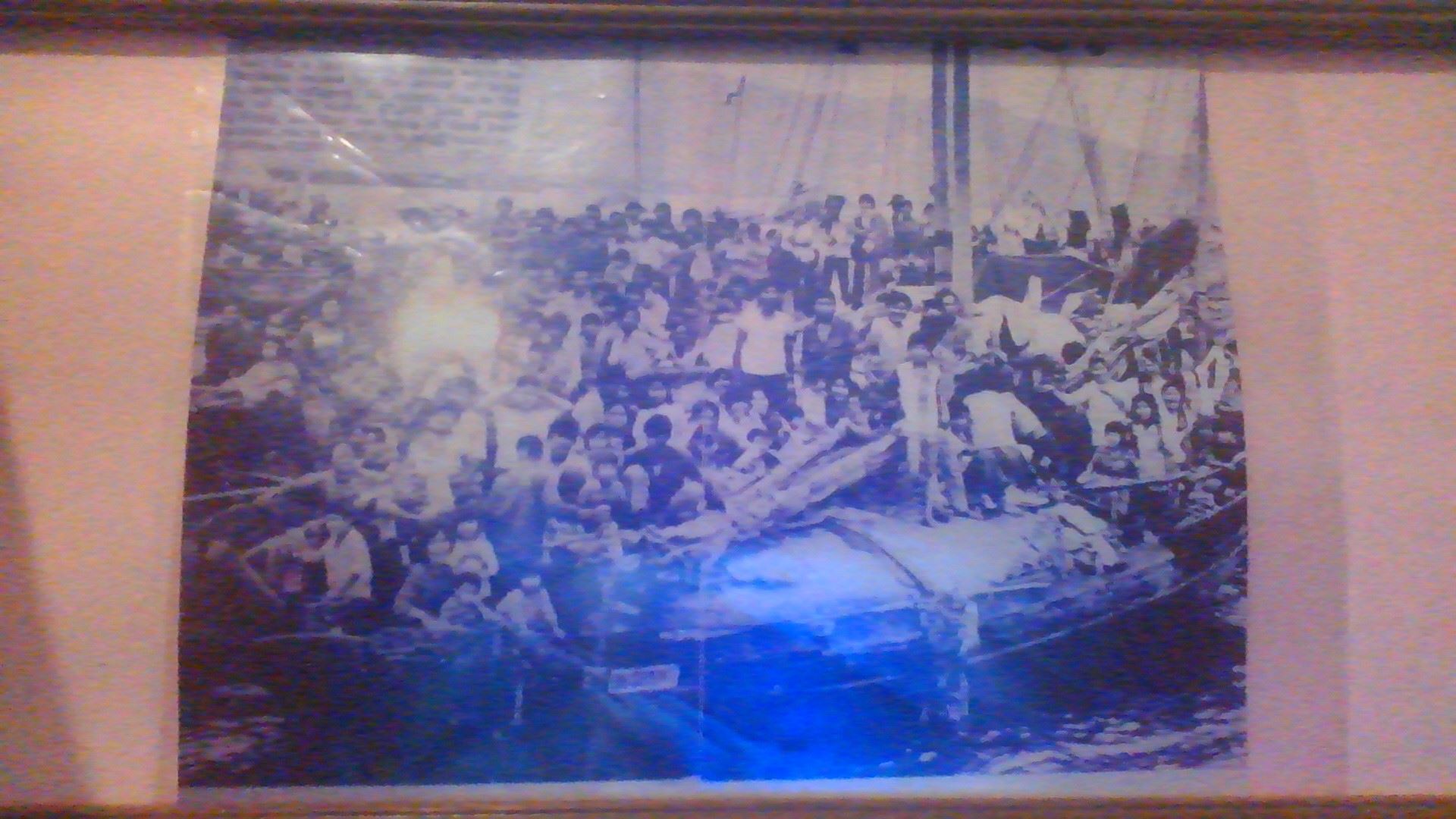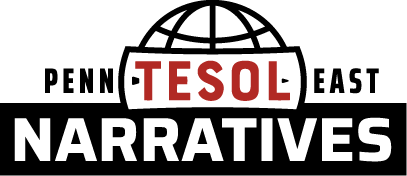-
-
-
-
TESOL Narratives
-
TESOL Narratives was a free monthly event featuring local TESOL professionals who tell stories of their most successful and innovative teaching methods. |
TESOL Narratives Reviews
Navigating Multicultural Classrooms for Social Justice and Equity
Presenters: Dr. Kirti Kapur
Date: December 10, 2022
Reviewer: Bill Albertson, Jr., PennTESOL East Board VP
Distinguished professor Dr. Kirti Kapur has presented in countries all around the world, and came to PennTESOL East on December 10, 2022 to speak to us about how we can promote social justice in multicultural classrooms. She tells us that integrating multicultural language tasks in our classrooms is a great way to celebrate diversity, give each student an opportunity to be the expert on their own culture, and provide students a virtual window into places and cultures all over the globe. Topics such as international holidays can help students understand why their classmates do things the way they do, and food can help bring us together. As the world changes, Dr. Kapur reminds us, “there is no way we can have a monocultural class.”
Creating a multicultural classroom creates space for everyone to learn successfully. In setting up such a space, Dr. Kapur encourages us to ponder the following questions: “How do we engage students to become culturally responsible? What do we understand by narrative inquiry and co-creation? Which curricular frameworks are most effective in promoting multicultural education?”
A classroom that celebrates multiculturalism may ask students to “Create a mini-documentary, celebrate student ethnic groups, take a virtual diversity classroom field-trip, host guest speakers from students’ ethnic groups, encourage playful participation, celebrate holidays around the world, [and host an] international potluck.” Dr. Kapur provides an example of a learning opportunity that her students encountered at an international potluck. A student from Vietnam brought in cupcakes to celebrate Thanksgiving, but she used a special recipe that included bits of pork on top of the cupcakes. Of course, Muslim students in the class were not able to eat her cupcakes. It was challenging for her to validate the student and her efforts while also being respectful to the students who were unable to eat the cupcakes, but it was an opportunity for students to respect students’ food restrictions.
Dr. Kapur reminds us that we all have biases about culture, which “encompasses language, religion, cuisine, stereotypes, biases, social habits, music, and arts.” While the list is not exhaustive, it is a starting point to help us “become culturally responsible” as teachers. Students bring biases with them, but it’s our responsibility to work to remove these and develop understanding. In promoting equity in the classroom, “everyone is given the opportunity to speak, and everyone’s idea is there on the table for discussion.” When our students can accomplish this, our classroom is diverse.
To help our students feel comfortable in this diverse environment, we need to let examples come from students. We need to give our students opportunities for powerful and effective co-creation, which is a 21st Century skill. We need to be “curriculum makers,” not just curriculum implementers, who make meaningful decisions about how material will be covered, integrating multicultural perspectives as often as possible. We need to let our students create narratives in multimodal ways to express themselves, allowing stories to be “woven together” like a “quilt” that students make meaningful.
This “pedagogy of empowerment” creates space for all learning, which is no longer teacher-centered. It allows our students to become the sources of knowledge. The job of the teacher is facilitator, encouraging such meaning-making. Dr. Kapur reminds us that our classroom is a salad bowl, not a melting pot, and giving a voice to every student is the duty of the teacher.
The Magic of the Professor/Tutor Collaboration
Presenters: Leslie Kirshner-Morris and Joanna Labov
Date: October 8, 2022
Reviewer: Harrington E. Crissey, Jr., PennTESOL East Board Member
On Saturday, October 8, the monthly TESOL Narrative featured Leslie Kirshner-Morris and Joanna Labov giving a presentation entitled
The Magic of the Professor/Tutor Collaboration: Improving Content Language Learning Outcomes in Reading and Writing. The presentation was very interesting and informative. It is noteworthy that among the listeners were twenty-eight TESOL students and one professor from the Ecole Normale Superieure - University of Antananarivo on the island of Madagascar.
The learning goals of the presentation were 1) the importance of collaborating weekly online with an assigned learning lab tutor; 2) the importance of using collaborative tools to facilitate lesson planning, delivery, reflection and intervention and 3) how to improve students' reading and writing skills by collaborating effectively with an assigned learning lab tutor. The importance of the professor-tutor collaboration is not highly recognized. Ms. Kirshner-Morris and Dr. Labov explained the effectiveness of a collaboration between an ESL reading/writing professor and a learning lab tutor. The tutor was assigned to the professor's lower-intermediate reading/writing class. The importance of relationship building was an essential aspect of the collaboration. In addition, there was a commitment between the professor and the tutor to plan the classes in order to meet the needs of the students on a weekly basis.
The collaboration between the professor and the tutor was effective because of their commitment to the Dynamic Assessment model (Gottlieb, 2006). They used the model to plan the classes weekly, review individual student progress and intervene when needed. They shared observations about the students' level of engagement in the class and tutoring sessions and also their progress in the class. They also discussed how to connect their funds of knowledge with course content (Moll, 2013).
The tutoring sessions, which were once a week, occurred immediately before the professor's first class of the week. The tutor prepared the students for the language and content demands of their reading/writing classes. A collaborative model of intervention was used by the professor and tutor to take into consideration the students' life situations which might be impeding their progress. The collaboration resulted in lessening the possible failure of students who were in danger of doing so.
How Can We Encourage Academic Integrity in Online Classes
Presenter: Barbara Auris
Date: September 10, 2022
Reviewer: William Albertson, PennTESOL East Board Member
On September 10, 2022, Dr. Barbara Auris, Associate Professor of ESL at Montgomery County Community College, provided insight into how we may promote an environment of academic integrity among students in online classes tothe PennTESOL East membership along with guests from the TESOL program at the University of Antananarivo in Madagascar.
Dr. Auris’s exploration of academic integrity began during her time teaching in the Peace Corps in Gabon where she was told that “[she had] to keep an eye on [the] students because they might cheat.” This directive from her superiors gave Dr. Auris the impression that the relationship between student and instructor is adversarial and that “catching cheaters” is one of the primary responsibilities of a teacher.
This mindset changed, however, when Dr. Auris encountered “Cheating Lessons” by James Lang, a book that she describes as “terribly interesting” and recommends that all teachers add to their reading list. She tells us that Lang outlines two reasons why students cheat. First, some students may have a “disposition for dishonesty,” which may be difficult to change. Second, cheating may be a result of the learning context and classroom setup, which can be remedied by making it “unnatural to cheat.” Dr. Auris tells us that “if you become more aware of why students are cheating and how students are cheating, and you address those underlying issues, then there will be fewer problems in the classroom.” If teachers make it more convenient for students not to cheat and do their own work, students will be more inclined to do so.
With this, Dr. Auris’s conception of her relationship with students and academic integrity evolved from “adversarial” to “conversational”. She tells us that, with some adjustments to our classroom, we may be able to change a student’s mindset about academic integrity. She warns us that talking about the negative, focusing on plagiarism and its consequences, may not have the intended effect. Instead, we may choose to speak about the benefits of academic honesty, breaking it into easily digestible parts. Students may have questions about what constitutes academic honesty—they may be unsure what it is, why it’s important, or what is expressly permitted or disallowed. She continues to discuss the topic in small doses throughout the term, giving occasional quizzes along the way, to ensure that students will be thinking about the topic regularly.
Dr. Auris offered three best practices to address issues of academic integrity:
-
Ask students to collaborate with the instructor to write their own “honor code.” Because students participate in its development, they may be more inclined to buy into it and uphold its principles.
-
Give low-stakes writing assessments in the same context as the graded assignment to get students accustomed to what’s going to happen in the graded assignment.
-
Give different versions of the assessment to each students to prevent collaboration on individual assessments.
Along with this, Dr. Auris recommends that we give students seven days to complete assessments so that everyone can complete it at the time of the week that they are available to dedicate to academic work. Giving ample time may help prevent situations in which students turn to dishonest practices due to lack of time.
Despite our best efforts, however, Dr. Auris reminds us that we are still responsible to check for plagiarism. In the event that a student does commit academic dishonestly, we must decide if the student understands the issue and use it as a teaching opportunity by offering an alternate but equivalent assignment for the student to complete. If a student denies the charge, it may be necessary to show proof that you know that there has been a violation of the classroom honor code and give them another chance to admit what happened. If the academic dishonesty suggests intent, the best learning opportunity may be to impose consequences such as a grade of 0 on the assignment.
Our guests from Madagascar weighed in on this topic. Sallià tells us that she agrees “in giving a second chance for the dishonesty that students sometimes make because they may really have some reasons” and that “most of the students do plagiarism when they are under the time pressure.” Also, “sometimes the instructions from teachers are not clear enough and students who are afraid of asking for clarification just do plagiarism.” Kanto Fiderana reminds us that “some students practice plagiarism because they don’t believe in their knowledge. They want to write a perfect answer in order to impress their teacher.” Epaphras suggests that “the best way to beat plagiarism is to have self-confidence,” and Lucie FrancelineRafanomezantsoa adds that to build self-confidence in students, “encouragement from teachers is very important, and less pressure.”
To end, Dr. Auris reminds us that our relationship with students should be supportive and that we should “be seen as a coach looking to help the students improve.”
Telling Our Stories: Oral History Projects Both Big and Small
Presenters: Francie Woodford and Ann Hoang
Date: June 11, 2022
Reviewer: Mellissa Toomey, PennTESOL East Board President
During this month’s TESOL Narratives event, we heard about a wonderful teaching assignment: the use of an oral history project as a powerful learning and authorship tool for our multilingual students. Dr. Woodford and Ann explore the theoretical framework for creating motivational learning through culturally responsive teaching and then highlight ways to “start small” through inductive reasoning when enacting an oral history project by creating introductory questions, helping students find a theme to focus on, and through collecting key historical artifacts from one’s life (e.g. photos, letters, recipes, clothing, etc.) as a way to think about one’s experiences and gain depth in understanding them and possibly also interview another family member, etc. about these experiences. Such an assignment offers students practice with a number of important English skills, including speaking, listening, writing, reading, and grammar and allows for shared authority between teacher and student.
Ann shared her own oral history project from Dr. Woodford’s course, a beautifully powerful story highlighting her experiences being Chinese in North Vietnam and her precarious, narrow escape by boat from Hong Kong where she had been placed in a detention camp for two years before coming to Philadelphia. Her people were known as “the boat people” as a result of such experiences (see Figure A below). Ann re-tells her powerful narrative in her oral history project of the Nationalities Service Center (NSC) helping her and her brother come to the United States, specifically Philadelphia, and giving them bedding and helping them get on welfare for their start in America. Her brother now has a well-known coffee shop in Philadelphia. It was because of the help from the NSC, Ann maintains, that she and her family members were able to start a new life in America.
“I felt I was reborn in this country.”
--Ann Hoang

Figure A: Ann is to the right, in the very front, second from the left.
How Can a Readers’ Theater Be Used to Combat Racism, Hate, and Injustice?
Presenter: Alexis Finger
Date: April 9, 2022
Reviewer: William Albertson, PennTESOL East Board Member
On April 9, 2022, the PennTESOL East membership was treated to an inside look at how Alexis Finger uses a Readers’ Theater, an activity in which participants read theatrical scripts aloud to an audience, to promote diversity and belonging. In her TESOL Narratives talk, titled “How Can Readers’ Theater Be Used to Combat Racism, Hate, and Injustice?” Prof. Finger chronicled how this activity that started with a small group of Drexel University faculty, staff, and students reading scripts turned into a large program on Zoom that includes participants from around the globe.
The founding philosophy behind using a Readers’ Theater to promote diversity, according to Prof. Finger, is that it allows all people, regardless of their English language level, public speaking ability, or theater experience, to partake in the event without the need for memorization. All scripts, which deal with one or more issues of diversity, racism, anti-Semitism, homophobia, and injustice, are written by Prof. Finger with the help of various long-term Readers’ Theater participants and include vignettes from novels, plays, news stories, and personal narratives. By reading these parts, participants “come to empathize with… characters” who may look differently or think differently from them, helping them to overcome their prejudices based on “a lack of knowledge of the people we are judging.” Prof. Finger quoted Atticus Finch, the lawyer from To Kill a Mockingbird, who said, ‘You never understand a person until you consider things from his point of view, until you climb into his skin and walk around in it.’”
During a performance, Readers’ Theater participants read the script before an audience, and follow-up discussions provide opportunities for the audience to share their reactions and stories. In the weeks prior to the performance, participants take part in several rehearsals that include ice breakers and opportunities for enhancing communication skills. Since its inception, the Readers’ Theater at Drexel University and subsequent People’s Zoom Readers’ Theater have performed several different scripts, and a new script addressing the recent wave of Asian hate is currently in development.
As a Readers’ Theater participant, I can attest to the impact that Readers’ Theater has. Through the program, I have met a diverse group of like-minded people united in their mission to combat hate. The PennTESOL East board would like to thank Prof. Finger and Yvonne Liu, her production director, for their wonderful presentation.
A complete recording of the presentation can be found here: https://www.youtube.com/watch?v=OTejV3Haw7Q.
Those who are interested in learning more about the program, including opportunities to perform, are invited to visit the People’s Zoom Readers’ Theater website here: https://www.pzrt.org/ |
My Experiences in TESOLPresenter: Kit Crissey Date: March 12, 2022 Reviewer: Leslie Kirshner-Morris, PennTESOL East Board Member |
In this session, Professor Kit Crissey takes us on a tour of his historical journey that led him to a long and fruitful career as a leader and teacher in the field of Teaching English to Speakers of Other Languages. He outlines the factors that led him to be an ESOL teacher such as 1) an avid interest in Geography and History of the United States of America and abroad;2) a keen memory for people’s names and dates and 3) a strong background in classical languages such as Latin and Greek. The pearls of wisdom in this session emerge as Kit leads us through his travels in the Navy to Guam, Micronesia, the Marianna Islands, Pearl Harbor, Japan and Hong Kong. He describes how his travels gave him wanderlust and led him to teach in Japan before securing a long career teaching English as a Second Language in the USA. Some of the most important highlights of this session are the historic methods he used to launch his career, such as The Silent Way, Total Physical Response, and Counseling Learning. Participants respond in the Q and A session with their fascinating thoughts of how these methods have influenced their current approach to teaching Multilingual Learners in the post-method era of second language pedagogy. |



